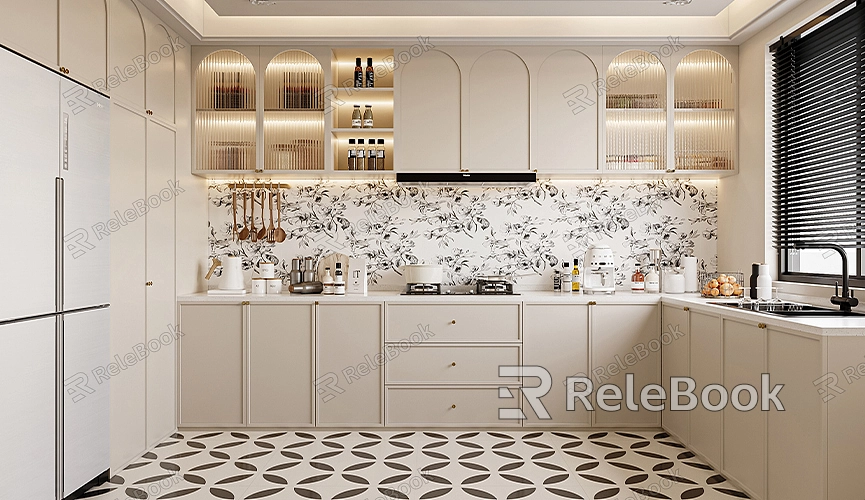How to Render with GPU in Blender 2.8
Blender is a powerful open-source 3D modeling and rendering software, widely recognized for its efficient rendering engine and flexible modeling tools. Blender 2.8 introduces many exciting new features, with GPU rendering being one of the most notable. Compared to traditional CPU rendering, GPU rendering can significantly boost rendering speed and efficiency. This article will detail how to utilize GPU rendering in Blender 2.8, helping you maximize your hardware performance and enhance rendering results.
Enabling GPU Rendering

Enabling GPU rendering in Blender 2.8 is a straightforward process. Follow these steps:
1. Launch Blender 2.8: Open the Blender 2.8 software and load your project or create a new one.
2. Open User Preferences: Click on the “Edit” menu in the upper-left corner and select “Preferences” to access the user settings. Here, you can adjust various Blender settings, including rendering engine and GPU-related options.
3. Select the Rendering Engine: In the “System” tab of the user preferences, locate the “Render” section. Ensure that you select the “Cycles” rendering engine, as GPU rendering is only available in Cycles. Cycles is Blender's high-quality rendering engine that supports GPU-accelerated rendering.
4. Configure GPU: In the “System” tab, find the “CUDA” or “OptiX” options (depending on your GPU type). Blender will list all available GPUs. Select your graphics card and ensure it is checked as a rendering device. If you have multiple GPUs in your system, you can choose one or more for rendering as needed.
5. Set Rendering Options: In Blender's rendering settings panel, you can further adjust rendering parameters. Switch to the “Render” panel, find the “Device” option, and set it to “GPU Compute.” This ensures that Blender uses the GPU for rendering instead of the default CPU.
Optimizing GPU Rendering Performance
After enabling GPU rendering, you can implement some optimizations to enhance rendering performance and quality:
- Adjust Sampling Settings: In the “Render” settings panel, you can modify the sample count. Higher sample values improve image quality but also increase render time. Adjust accordingly to balance quality and performance.
- Use Appropriate Materials and Textures: Choosing efficient materials and textures can reduce render time. For example, use textures instead of high-resolution images, or opt for simpler materials to speed up the rendering process.
- Optimize Scene Complexity: Reducing unnecessary details and polygon counts in your scene can significantly enhance render speed. Simplify models and eliminate superfluous details to optimize rendering efficiency.
- Utilize Render Layers and Passes: Dividing rendering into multiple layers or passes can streamline post-processing and compositing. This not only boosts rendering speed but also provides better control over the final output.
- Keep Drivers Updated: Ensure your GPU drivers are up to date. Manufacturers regularly release updates to enhance performance and compatibility.
Advantages of Using GPU Rendering
GPU rendering offers several clear advantages over CPU rendering:
- Speed Increase: The parallel processing capabilities of GPUs greatly enhance rendering speed. For complex scenes and high-resolution images, GPU rendering can substantially reduce render times.
- Efficient Resource Utilization: GPUs are designed for handling numerous parallel computations, making them more efficient than CPUs, which operate serially.
- Improved Workflow: Faster rendering speeds allow for quicker iterations and modifications to projects, boosting overall productivity.
Seeking Additional Resources
To further enhance your Blender projects, if you need high-quality 3D textures and HDRIs for your models and virtual scenes, you can download a variety of premium 3D textures and HDRIs for free from [Relebook](https://textures.relebook.com/). If you're looking for stunning 3D models, you can also find them at [Relebook](https://3dmodels.relebook.com/), which offers a wealth of high-quality 3D resources to improve your design quality and efficiency.
Enabling GPU rendering in Blender 2.8 can significantly enhance rendering speed and efficiency, fully utilizing hardware performance. By correctly configuring GPU rendering settings, optimizing rendering parameters, and using suitable resources and tools, you can achieve higher-quality rendering results. I hope this guide helps you successfully activate GPU rendering and improve your workflow.

